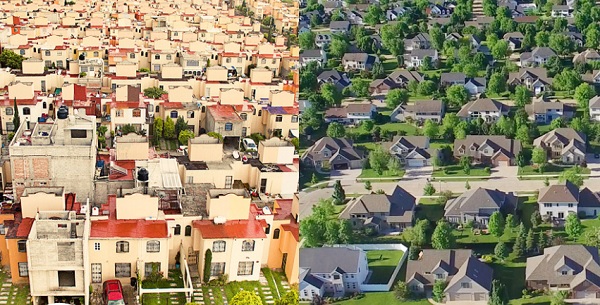Personal finance reporter for MarketWatch Jacob Passy, published an article stating that, according to a study released by Pew Research Center this year, the “American Dream” appears to be more attainable in Mexico and China than in the United States of America.
Pew Research Center released a report showing the American middle class is shrinking, while thriving in other European countries. Recent research shows that young homeowners in China and Mexico have the U.S. beat.
The report from HSBC found that 70% of millennials in China and 46% of Mexican millennials own a home versus 35% of young adults in the U.S. Young people in China are benefiting from wage growth that is projected to outpace the rate of home price appreciation set last year. And the U.S. doesn’t just fall behind China — France (41%) also came out ahead. In the United Arab Emirates, only 26% of millennials own a home, and Australia does only slightly better at 28%. (The average millennial U.S. homeownership rate in a separate WalletHub study rested around 40%.)
In the U.S., the Land of 10,000 Lakes should probably go by the Land of Lennies. In Minnesota, almost 50% of millennials own a home, a greater share than in any other state in the country, according to a separate report from WalletHub. Close behind were West Virginia (49%) and Iowa (48%). The District of Columbia rated the lowest on that list, with only 23.5% of millennials owning property there. Other states with more muted levels of millennial homeownership, including Hawaii, New York, Rhode Island and Oregon.

The American Dream appears to be more attainable in Mexico and China (Photo: marketwatch.com)
Stagnant wages go further in states where property is cheap. Real-estate website Trulia calls the Midwest, along with the South, “the Bargain Belt,” since home prices have increased more slowly there than in other parts of the country. And at a time when millennial wages are stagnant, cheaper homes clearly make the American Dream more attainable — and even then, young people have to weigh these purchases against potential savings from renting with roommates.
And as Trulia found in a report last December, affordability may be squeezed in the Midwest as 2017 progresses, in part because of renewed consumer confidence following the presidential election. “We expect the bargain belt to continue catching up with the costly coasts for one primary reason: bargain belt metros are full of revived Republicans, especially in the South,” Ralph McLaughlin, chief economist at Trulia, wrote. “Republicans have experienced a massive upward swing in optimism about buying and selling a home in 2017, so we think metros with the largest share of them are poised for housing market growth next year.”
Source: http://www.marketwatch.com/

